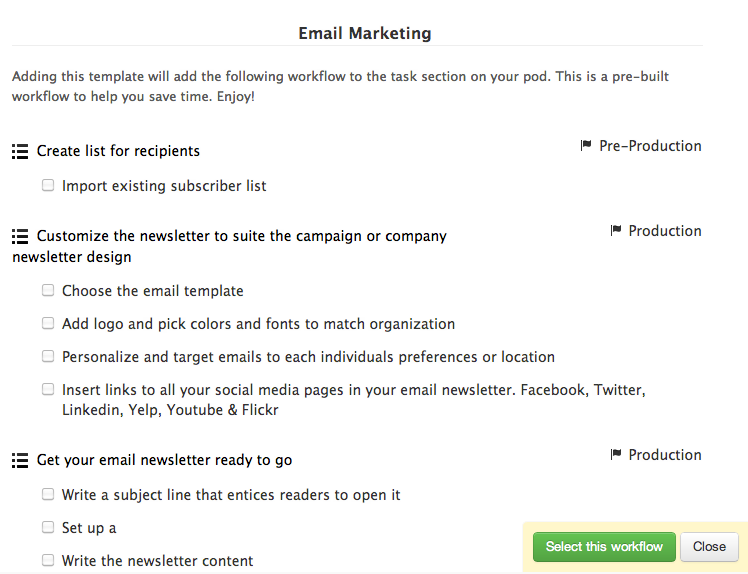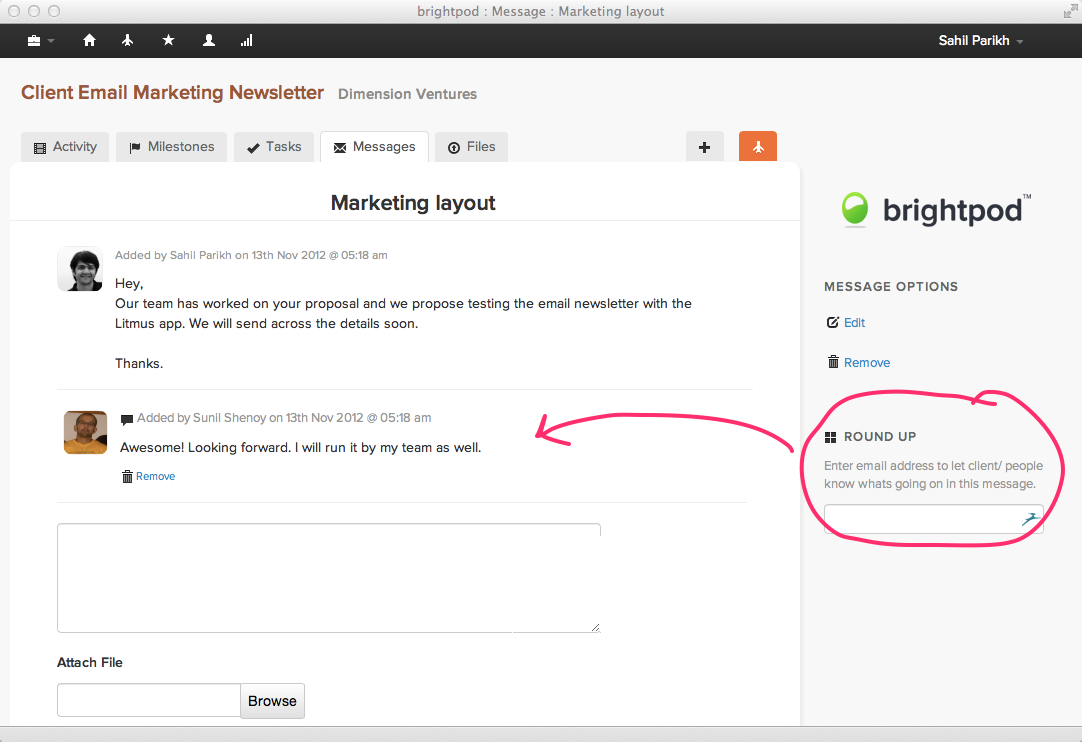Synage Software, more popularly known as the DeskAway guys, are on to their next thing and they are calling it BrightPod. Sticking to their expertise of developing collaboration software, BrightPod is a collaboration tool built specifically for digital marketers. I got an early peek into it and while the the product and the segment they are going after hold promise, it needs work on the interface and a big push on the adoption side.
Just like any other collaboration tool, you create a new pod (a fancier term for project) to get started. But that’s where the similarity ends. Now instead of adding individual tasks to it, you choose a workflow from the existing ones or you create your own (coming soon).
Most common marketing projects like an email marketing campaign, a Google Adwords campaign and a social media campaign are covered. Select the email marketing workflow and all the tasks that it needs are automatically added to the pod. Just assign a client, set deadlines, add team members and you are good to go. Digital agencies, who run the same kind of campaigns (at least structurally) for different clients will find this a huge time saver.
I tried two of the workflows – Google Adwords and email marketing. While the Google Adwords workflow was well defined, email marketing had me lost. The team would do well to reduce the number of tasks or mark the ones that not everyone bothers about as optional. Another challenge going ahead with the workflow would be that a large company works very differently from a startup, who would overlook a lot of the tasks to push the campaign out of the door as quickly as possible.
Moving on, BrightPod has another two more very interesting features. Focus and Round Up. Focus, as the name suggests, helps you focus only on key tasks and drown out the others. Temporarily from your mind, I mean. Marketing, unlike other functions in a company, is typically about a lot of small things coming together to form the complete piece. Star a task that is important, and it will appear in your Focus tab to allow you to, well, focus, on the task.
Before we get to Round Up, you need to get this. BrightPod is meant for marketers, with workflows and terminologies that marketers feel at home with. But marketing never functions in isolation. You have design involved, you have the web team involved, you might have other agencies involved and if you are an agency yourself, you need to get the client in on the project. This is where Round Up comes in. Just throw in the email address of the person you want involved in the conversation and they are in. They don’t have to get on to yet another app, they can just reply to that email and it will get added to the pod.
So far, so good. Now the things that BrightPod needs to improve. Simplicity is one of the main principles BrightPod is built on and while it delivers on certain counts, it doesn’t have the same kind of simplicity that Asana (something I have used extensively) or Trello (something that I have seen in use around) have.
The BrightPod dashboard, the first thing you will see each time you log in, has an activity stream of all the active pods. Every task added, every comment added, every milestone added, every task completed. For me, that was plain overwhelming, given how each workflow adds 20-30 tasks straightaway. When you log into your collaboration tool first thing in the morning, you want to see a list of the tasks that are due, the overall state of different projects and the important tasks for the day. While tasks due are presented in the dashboard, they are on this section on the right that doesn’t catch your eye first thing.
Also when you click on a pod to make additions and modifications, the navigation is different from that of the main screen, again leaving you a little lost. While these are small things that a user can get used to in a week of working with the app, these are things that typically come in the way of getting the buy-in of the whole team to move to a new application, or even earlier during the evaluation phase.
The biggest challenge BrightPod will face with adoption is getting companies used to the idea of having a specialized collaboration tool for marketers. Organizations like to have the same tool for everyone in the organization, so it would be interesting to see how the company solves this challenge.
All said and done, the product is still in alpha phase, so a lot of these things will get better with time. If you are digital marketer, go ahead, sign up for a BrightPod invite and let us (and the BrightPod team) know what you think.






































